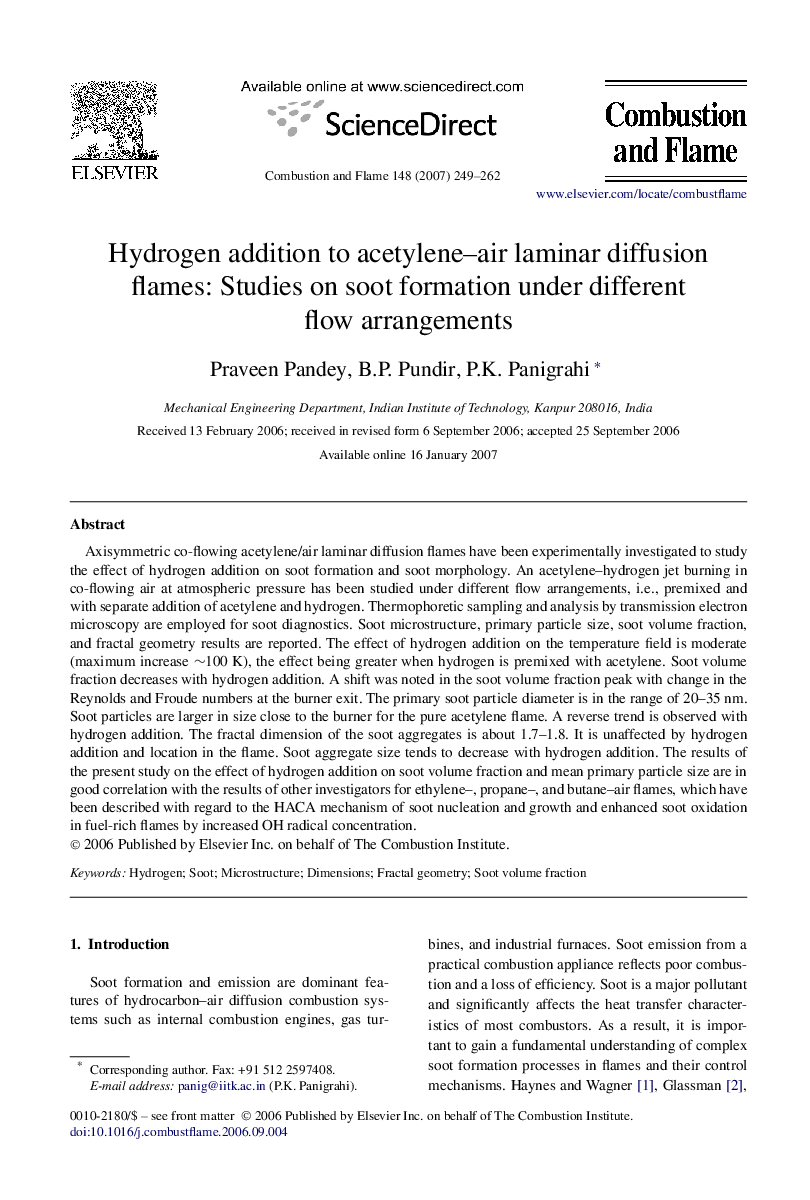| Article ID | Journal | Published Year | Pages | File Type |
|---|---|---|---|---|
| 169776 | Combustion and Flame | 2007 | 14 Pages |
Axisymmetric co-flowing acetylene/air laminar diffusion flames have been experimentally investigated to study the effect of hydrogen addition on soot formation and soot morphology. An acetylene–hydrogen jet burning in co-flowing air at atmospheric pressure has been studied under different flow arrangements, i.e., premixed and with separate addition of acetylene and hydrogen. Thermophoretic sampling and analysis by transmission electron microscopy are employed for soot diagnostics. Soot microstructure, primary particle size, soot volume fraction, and fractal geometry results are reported. The effect of hydrogen addition on the temperature field is moderate (maximum increase ∼100 K∼100 K), the effect being greater when hydrogen is premixed with acetylene. Soot volume fraction decreases with hydrogen addition. A shift was noted in the soot volume fraction peak with change in the Reynolds and Froude numbers at the burner exit. The primary soot particle diameter is in the range of 20–35 nm. Soot particles are larger in size close to the burner for the pure acetylene flame. A reverse trend is observed with hydrogen addition. The fractal dimension of the soot aggregates is about 1.7–1.8. It is unaffected by hydrogen addition and location in the flame. Soot aggregate size tends to decrease with hydrogen addition. The results of the present study on the effect of hydrogen addition on soot volume fraction and mean primary particle size are in good correlation with the results of other investigators for ethylene–, propane–, and butane–air flames, which have been described with regard to the HACA mechanism of soot nucleation and growth and enhanced soot oxidation in fuel-rich flames by increased OH radical concentration.
